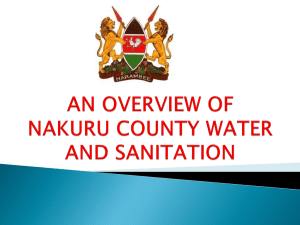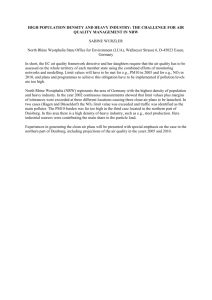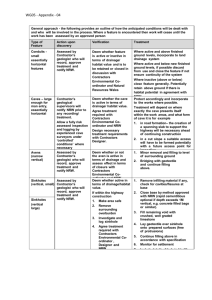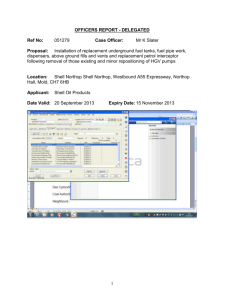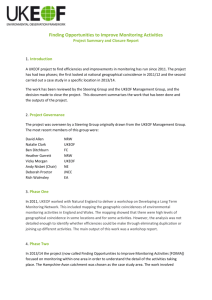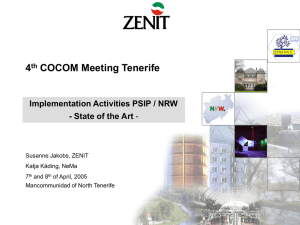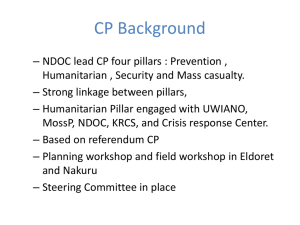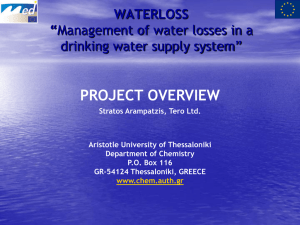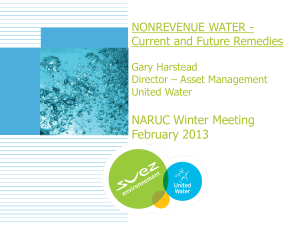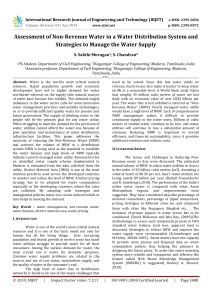nakuru rural water and sanitation company limited
advertisement
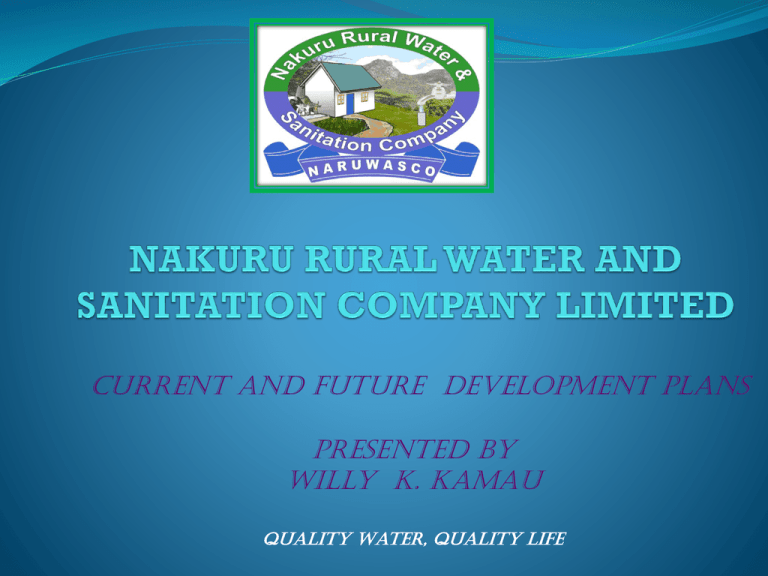
CURRENT AND FUTURE DEVELOPMENT PLANS PRESENTED BY Willy K. Kamau Quality Water, Quality Life OVERVIEW The company was incorporated under the Company’s Act Cap 486 by Certificate of Incorporation Number C.128339 dated 14th September 2006. Nakuru Rural Water and Sanitation Company Limited is a Water Service Provider (WSP) under the County Government of Nakuru and the Rift Valley Water Services Board who are the License holders. The company is thus a legally constituted entity capable of undertaking its functions as stipulated in its Articles and Memorandum of Association. CONT. The Board of Directors has 9 members who represent various stakeholders including 2 Directors from the County Government of Nakuru, the representatives of Gilgil/Naivasha, Subukia/Bahati, Rongai, Molo, Njoro and Kuresoi constituencies and the youth. The service area of the company is the whole of Nakuru County except Nakuru and Naivasha Sub Counties. The total population within our service area is 511,586. However, we only provide water to an estimated population of 304,693. The rest are served by CBO’s through community projects MANDATE • Nakuru Rural Water and Sanitation Company was primarily established to provide water and sanitation services within its service area in accordance with Section 55(1) of the Water Act 2002. • It shall implement financially viable practices and apply commercial principles in the provision of services. VISION • To be the leading water and sanitation services provider in the country MISSION • To provide sustainable quality water and sanitation services to consumers within our service area at competitive rates CORE VALUES •INTEGRITY AND PROFESIONALISM •TEAM WORK •CUSTOMERS FOCUS •COMMITMENT . NRW REDUCTION PLAN. INTRODUCTION: GENERAL OVERVIEW OF THE COMPANY. A major challenge affecting NARUWSCO is accounting for the water produced. This makes it difficult for the company to meet its obligation in service delivery. At present water from some sources is estimated and more than 70% water connections are on flat rate, average assessment and faulty meters making hard to account for the water accurately. The unaccounted for water (NRW) for the company at present is 62% which is quite high compared with the recommended standard of 25%. The high percentage of the unaccounted for water seriously affects the financial viability of water utilities through lost revenue and increased operational costs. For sound and sustainable management of the water, the company has come up with short term and long term plan to address this issue. NRW MID-TERM REDUCTION PLAN PROPOSED SHORT TERM ACTIVITIES. ANTICIPATED RESULT TIMEFRAME 1. Training of meter readers/billing clerks/staff on the wide target for NRW reduction based on (awareness, location and repair (ALR) . Meter readers /staff/billing clerks will promote ownership in implementation of the NRW programme It will promote competence in customer service delivery. 6 months 2. Replacement/Repair of all defective production meters, zonal meters and consumer meters. For accurate accountability at production and zonal points. Improved metering accuracy helps contribute towards improved revenue billing, collection with corresponding improvement in service delivery. The overall aim of this is to reduce high levels of NRW. Incase we get a donor, we intend to finish within 2 years 3. Stakeholders and other relevant authorities’ involved in addressing the reduction of NRW by having several barazas Involvement of stakeholders and other relevant authorities will help in overcoming illegal uses of water, interference of water meters, unauthorised connections and self reconnection. This will promote reduction of NRW. Continous 4. Updating and upgrading of billing software and hardware and train personnel on the same. To improve data integrity on billing. 4 months . 5. Improve the Promotes more efficient usage of infrastructure by existing water, open up of dry areas upgrading the distribution and help in NRW reduction. system to eliminate the existing spaghetti network 3- 5 years 6. Data collection using GIS:i. Training ii. Connection details. iii. Main & service pipeline location. iv. Data entry. v. Data compilation. vi. Map preparation and printing. GIS data having been captured in the map of the area will help the NRW management team to monitor the trend of connections, pipeline leakages and in future the data will be incorporated with billing. A consultant has been appointed by the Regulator for population data. Hoping to get support from development partners 7. Upgrading of pumping equipments to improve efficiency Reduction of high electricity consumption 3 years SOME OF THE CHALLENGES OF THE COMPANY INCLUDE: 1. Poor reticulation in most areas resulting in huge water losses due to frequent leakages and bursts, hence reducing revenue and coverage; 2. Low metering ratio resulting in low revenues because majority of consumers are billed on either flat rate or average assessment which are not accurate. The metering ratio is currently 30%; 3. Escalating costs of essential inputs like chemicals and energy.; The Managing Director Nakuru Rural water & sanitation Company Ltd P. O. BOX 386- 20100 NAKURU THANK YOU
